
NVIDIA® Nsight™ Development Platform, Visual Studio Edition 4.7 User Guide
Send Feedback
In NVIDIA® Nsight™ Visual Studio Edition, the host is the term for the computer that is running Visual Studio, where your application is being built and debugged. After you install NVIDIA Nsight on your computer, you will see a new menu called Nsight on your Visual Studio taskbar.
Feel free to explore the various options on this menu. The items that are critical for debugging will be discussed in further detail in later topics.
After installing NVIDIA Nsight on the host machine, open Visual Studio and go to Nsight > Options to configure your settings.
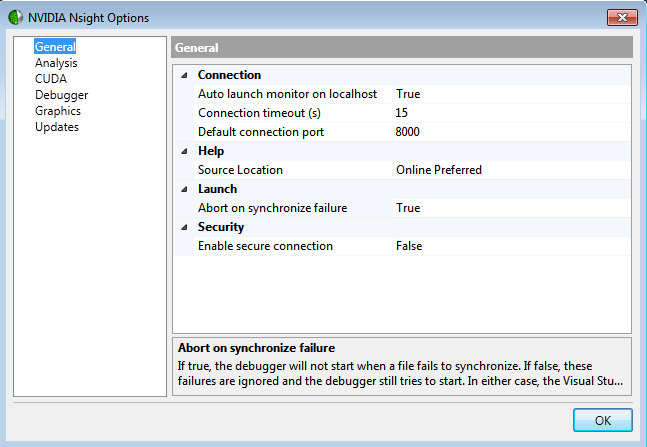
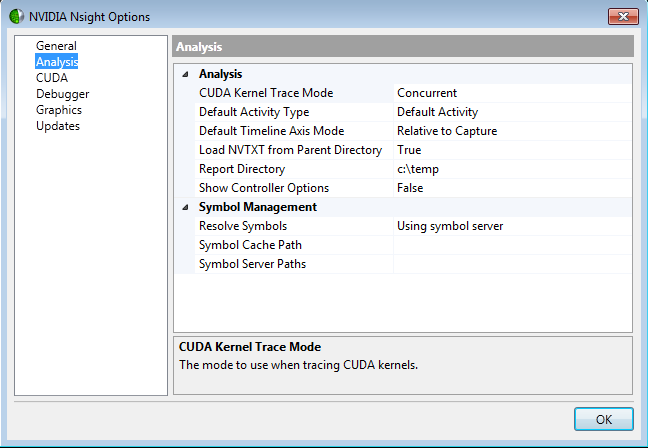
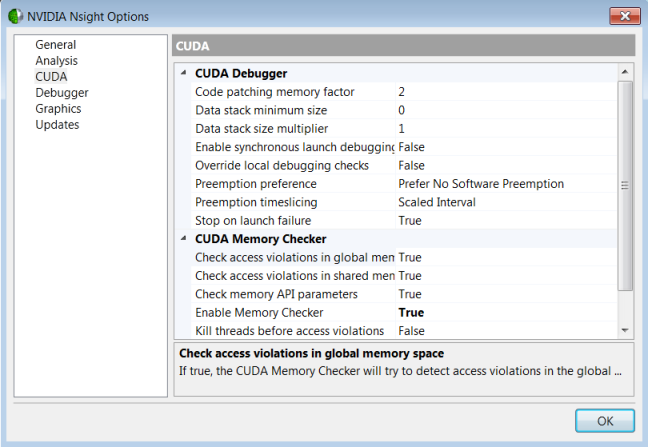

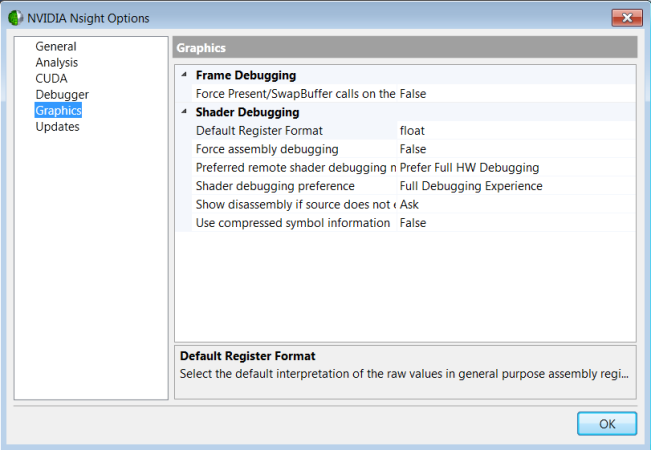
Frame Debugging
- Force Present/SwapBuffer calls on the target to repaint the window — If this option has been set to True, the frame replay will automatically invalidate the window of the target application for every Present/SwapBuffer call.
Shader Debugging:
- Default Register Format — This option allows you to select the default interpretation of the raw values in general purpose assembly registers. If set to float, register components will be shown as float in the Watch window, and also interpreted as float in both breakpoint conditions and expressions. If set to int, the same register components will be shown as signed integers, and also used as such in both breakpoint conditions and expressions. It is also possible to control the interpretation of register data on a per-register basis, using the
$f,$i, and$uipostfixes. For example,r5$uiis the interpretation ofr5as auint4vector.- Force Assembly Debugging — This option is only available when debugging a Direct3D application. If set to true, the shader debugger will fall back to assembly debugging, even if source debug information is available.
- Preferred remote shader debugging mode — With this option, you can choose whether to prefer full hardware debugging or replay-based debugging on remote targets. When a breakpoint is hit, replay-based debugging frees the GPU to draw the desktop or run other application code. Full hardware debugging halts the GPU when a breakpoint is hit; no other tasks may run, but the debugger may run faster and may provide deeper insight of the hardware state.
- Shader debugging preference — This option selects how heavily shaders will be instrumented for debugging. The options available are:
- Full Debugging Experience — Supports all features, but may result in slow debugging speed.
- Limited Debugging Experience — May provide better debugging speed at the cost of not reporting information about sympathetic shader threads.
- Minimal Debugging Experience — The fastest setting, but also has the most restrictions. No information about sympathetic shader threads will be reported, and breakpoints set in other shaders while already debugging a shader may not be hit before a completely resume. Also, no render target, geometry, or compute buffer previews will be available in the Graphics Focus Picker.
- Disabled — Completely disables all shader debugging features, including pixel history.
- Show disassembly if source does not exist — With this option, if no source can be found for the given shader, then disassembly will be shown instead. You can choose one of three options here: Ask, Always show, or Never show.
- Use compressed symbol information — Using compressed symbol information reduces the memory used by the Nsight Monitor, but can slow down debugging performance.
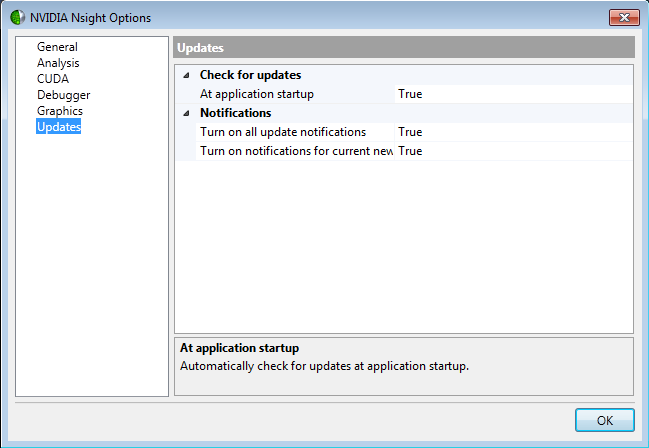
Click OK when you are finished configuring your options for NVIDIA Nsight.
After NVIDIA Nsight has been installed on the host machine, it will need to be configured. To do this:
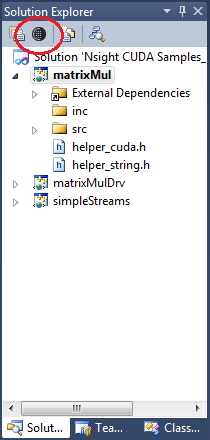
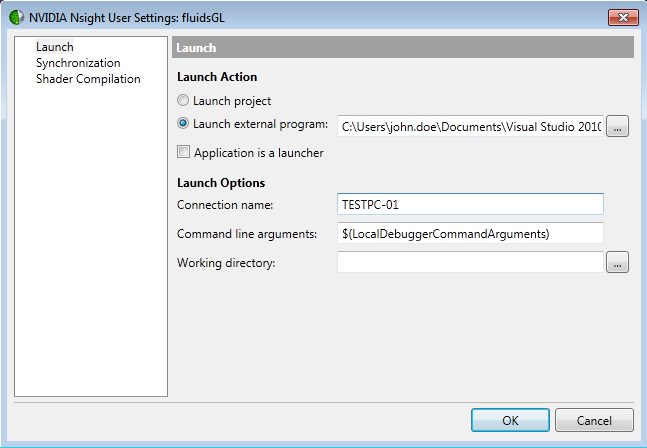
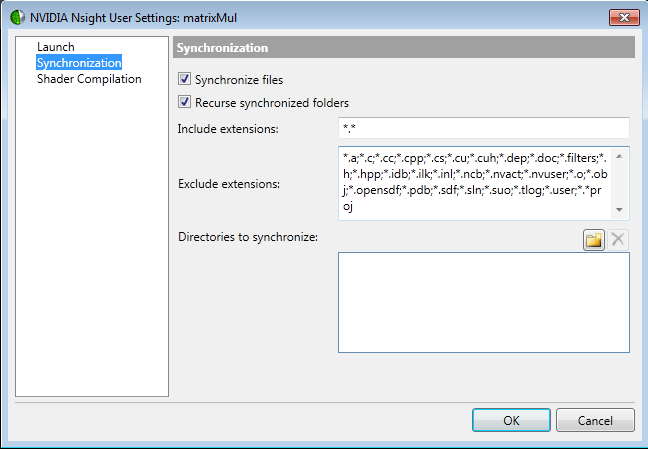
 | When using file synchronization, all file paths are relative to localhost.
When file synchronization is turned off, the file path is relative to the target machine (which could be localhost as well, depending on your settings.) |
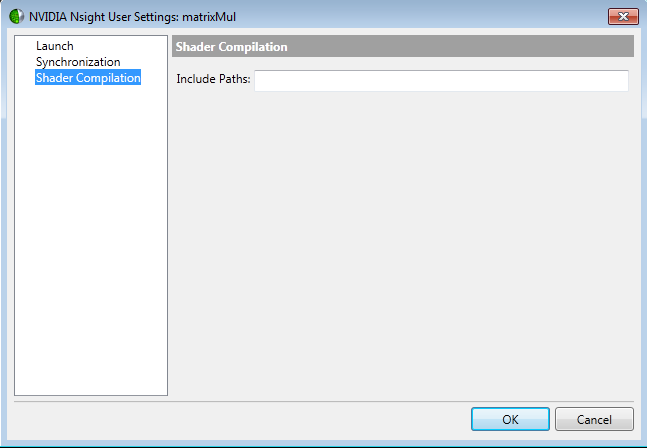
NVIDIA GameWorks Documentation Rev. 1.0.150630 ©2015. NVIDIA Corporation. All Rights Reserved.